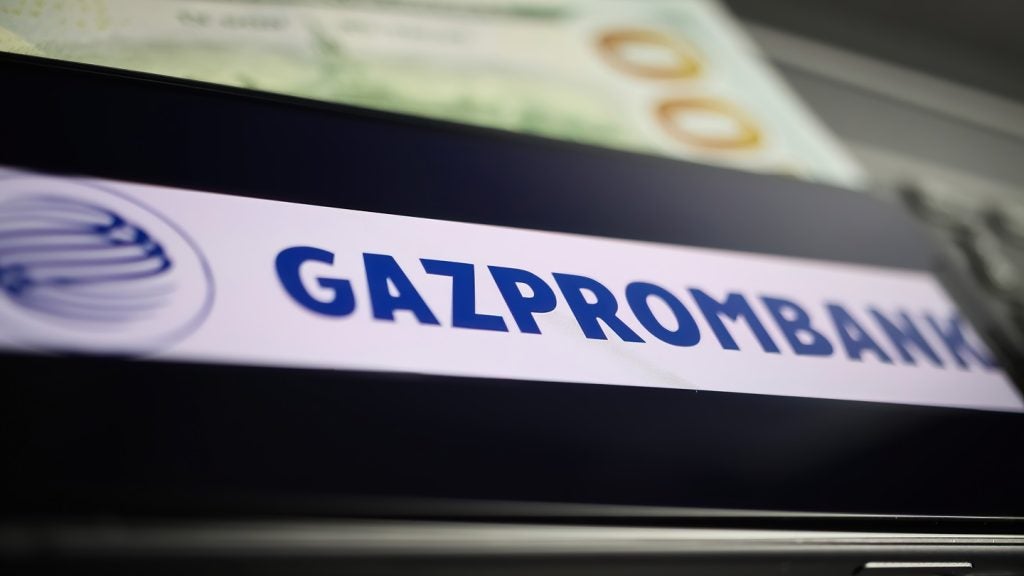and the global person-to-person lending market is already big news,
despite the fact that lending volumes remain a fraction of
mainstream retail bank loans. A new report published by VRL
KnowledgeBank* suggests P2P lenders will face many challenges in
the fight for business.
The beauty of P2P lies in its relative simplicity: using the
internet to connect people who want to borrow with people who want
to lend. This modern market could not exist without the internet,
and as the web evolves and becomes ever-more hotwired into a
globalising society, innovative developments such as P2P will
probably become more prevalent.
The industry has benefited so far from a generally positive market
reaction and without any major failures – when and if this happens,
the true resilience of the nascent P2P industry will be
tested.
The online P2P market was started in the UK in 2005 by Zopa, a
company made up, in part, by ex-employees of the online bank Egg
(now owned by Citi). Zopa has since launched in the US and Italy
and is planning to hit the Japanese market. In February 2006,
Prosper was the first player to open in the US and, worldwide, new
entrants started up since 2007 include LendingClub (US, May 2007),
Boober (Netherlands, February 2007; Italy, November 2007), Smava
(Germany, March 2007), Kokos (Poland, February 2008), iGrin
(Australia, October 2007), and PPDai (China, August 2007).
Perhaps the biggest deal to date in the P2P market was the
acquisition last October of CircleLending in the US by the UK’s
Virgin Group (see below). Supported by Virgin’s
high-profile chairman Sir Richard Branson, the acquisition is
spearheading Virgin’s wider US consumer financial services
plans.
One thing is for sure: P2P has rapidly become a global phenomenon.
Take Korea, for instance. There are a number of P2P operators,
including MoneyAuction.co.kr, FirstHand.co.kr, Popfunding.co.kr and
OliveAuction.co.kr. There are three tiers of loan providers in the
country, each governed by different regulations. The first tier is
commercial banks. The second tier is savings & loans banks and
lease companies such as Citi financial and GE Capital. The third
tier is moneylenders, who specialise in lending to borrowers with
very low credit ratings.
There are over 17,000 registered moneylenders in Korea and 35,000
unregistered ones. Interest rates are currently capped at 49
percent APR but it is not uncommon for illegal operations to loan
at rates of 100 percent or more. Some 3.28 million Koreans, or
approximately 6 percent of the population, borrow from
moneylenders. It is a $20 billion market and it is growing at 40
percent per year. It is this market that P2P lending players are
targeting.
How well do you really know your competitors?
Access the most comprehensive Company Profiles on the market, powered by GlobalData. Save hours of research. Gain competitive edge.

Thank you!
Your download email will arrive shortly
Not ready to buy yet? Download a free sample
We are confident about the unique quality of our Company Profiles. However, we want you to make the most beneficial decision for your business, so we offer a free sample that you can download by submitting the below form
By GlobalDataIn all, some 20 P2P lending players worldwide have already
originated over half a billion dollars in loans and a dozen more
players are preparing to launch soon. Buoyed by the present buzz
over social networking platforms such as MySpace and Facebook, P2P
lending is receiving considerable media attention and has been
featured in leading publications including The Economist,
Time, the Wall Street Journal, Forbes
and Smart Money.
But the industry remains, in terms of lending volume, minute
compared to the retail banking industry, and there are a number of
significant challenges for many P2P players. These are, namely,
marketing and brand awareness; investment in customer service, CRM
and credit rating; competitive margin pressure; and a blurred,
early-stage regulatory environment still working out how best to
monitor person-to-person lending.
The greatest challenge is marketing
Perhaps the greatest cost challenge is marketing: P2P players not
only have to establish brand awareness and consumer trust as
start-ups, they also have to persuade consumers to invest in a
whole new asset class and one which sounds risky: loans to people
they do not know. To break into the mass lending market, P2P
players will need to make significant investments in marketing and
brand building – a cost they may find difficult to absorb while
maintaining their low fee structure. P2P lending rates already
struggle to compete with bank rates in many cases.
P2P players also offer a far more limited product and feature range
than banks – especially when consumers can use financial comparison
websites and online brokers to choose among the offerings of
thousands of financial institutions.
And many P2P companies are relying predominantly on transactional
lending and focusing on prime borrowers. This approach has low
margins and requires high volume to be profitable. Volume growth so
far has been slow and there are no obvious drivers that are likely
to hasten this. An important reason is that P2P lending is
competing with banks using a product, the personal loan, which is
not popular among its target market of prime borrowers who prefer
the convenience of credit cards and can often get cheaper rates on
secured loans.
The main advantage of the instalment loan is for credit card debt
consolidation, yet the demand for this is strongest among subprime
borrowers.

$38 billion to $159 billion by 2012
Nevertheless, despite these challenges, many analysts and similar
groups are estimating robust demand for person-to-person lending
over the next five years. Published in December last year, for
instance, a US study released by Javelin Research & Strategy
predicted more Americans will turn to online P2P social lending
networks to pay off credit card debt, with the amount borrowed for
this purpose expected to grow from $38 billion in 2007 to $159
billion by 2012.
The problem for banks is that P2P lending does have clear
potential. It has disruptive potential in that it allows individual
borrowers and lenders to transact directly in what is essentially a
bond market for consumer loans – enhancing efficiency and
delivering better rates than financial institutions. It also has
the opportunity to provide a more satisfying lending and service
experience for customers. It offers more transparency and
disclosure, gives consumers more control over how their funds are
invested, and makes borrowing and lending a social
experience.
Relationship lending relies on personal interaction and has
traditionally been limited to the confines of local communities.
The promise of P2P lending is to leverage online social networking
tools to make relationship lending possible on a mass scale. Tools
used to achieve this include: the formation of a borrower-lender
community; personalised loan listings; borrower groups;
technologies to display the real-world connections between lenders
and borrowers; member endorsements; and online reputation scoring
which aggregates feedback ratings from borrowers’ other online
activities.
While these tools have potential, they are challenged by the
anonymity of the internet and lack of verification of information
provided by borrowers. So far P2P platforms have only demonstrated
limited ability to cater to those borrowers not served by
mainstream banks.
Hybrid models are emerging which blend P2P lending and mainstream
banking. Players have formed distribution partnerships with
financial institutions, are blending individuals’ funds with bank
funds in hybrid P2P/bank loans, and are forming two-way customer
referral partnerships with banks. New players will increasingly
turn to such approaches as they look for ways to overcome the
challenge of competing with the incumbents on volume.
First movers have a number of advantages in driving volume such as:
free marketing through media publicity; acquisition of the early
adopter market; the network effects of a large base of borrowers
and lenders; and the network effects of historical data on loan
performance. For banks there are opportunities to acquire
customers, earn commission income, and differentiate their products
and brands, particularly among younger demographics.
Even without engaging in P2P lending directly, there are a number
of things banks can do to compete with specific threats it might
pose: improve operating efficiency to drive better prices; improve
satisfaction through better customer service; step up community
involvement and corporate social responsibility initiatives; better
serve the long tail with more product customisation and more
flexible credit screening; and foster a more social banking
experience through the use of Web 2.0 tools.
* The above is a very brief extract from a new report published
by VRL KnowledgeBank called Peer to Peer Lending. Written by Ray
Cain, the report looks at the current state of the global P2P
market, examining the key players and trends driving the
industry.
For more information, contact Shouvik Sen on +44 (0) 20 7563 5615
or at
shouvik.sen@vrlknowledgebank.com
CASE STUDY
Virgin Money USA
Founded by Asheesh Advani in 2001, CircleLending pioneered the
business of managing P2P loans between relatives and friends.
Relaunched in October 2007 as Virgin Money USA, the service will
form the foundation of Virgin’s financial services offering in the
US. In the six years before its relaunch, CircleLending handled
some $200 million in loans. In the eight weeks after relaunch, this
rose to $250 million with business volume increasing by 70
times.
The Federal Reserve estimates there is currently over $89 billion
in outstanding interpersonal loans in the US, with another 6
million new loans created each year. The majority of these are
undocumented and in many cases the terms are not clearly defined.
The default rate on such loans is around 14 percent, according to
research by CircleLending. Virgin Money USA offers to formalise and
manage these loans, replacing the assumptions of an informal
agreement with written terms and clear expectations as to loan
repayment.
Virgin Money draws up loan contracts, establishes repayment plans,
provides relevant tax documentation, and offers to service the loan
– providing electronic fund transfers, email reminders, online
account access and year-end reports mailed to both parties. The
default rates on loans managed by Virgin Money drop to around 5
percent for personal loans and less than 0.5 percent for mortgages.
The service allows friends and family members to help one another
without misunderstandings, and to keep the interest in the family
rather than it going to a bank or finance company.
Loan products offered by Virgin Money USA include personal loans,
mortgage loans, and small business loans:
• Handshake Basic: Documentation for unsecured personal
loans
• Handshake Plus: Documentation and loan servicing for
unsecured and secured personal loans.
• Family Mortgage: Documentation and loan servicing for
private mortgages – typically used toward the purchase of a home,
or to refinance an existing bank mortgage.
• Seller Mortgage: Documentation and loan servicing for
private mortgages between a homeowner and a homebuyer. The
homeowner sells the house but keeps a lien on it until the mortgage
is paid off.
• Retirement Mortgage: Documentation and loan servicing for
reverse mortgages. A friend or relative extends a line of credit to
a homeowner and is paid back with home equity. This is found to be
a convenient way of helping aging relatives while keeping property
in the family.
• Business Builder: Documentation and loan servicing for
secured and unsecured private business loans.
Virgin Money USA charges fees for its services. Its present fee
structure includes:
• Handshake Basic: $99;
• Handshake Plus: unsecured $199 + $9 per payment; secured
$299 + $9 per payment;
• Mortgage loans standard service: loan agreement
documentation $649; loan servicing $249; loan servicing with escrow
$549;
• Business Builder basic service: unsecured $199; secured
$299;
CEO Advani says Virgin Money USA’s entire business model is
structured around doing business with banks. The company’s new
suite of products, due to be introduced in 2008, will blend P2P
lending between friends and relatives with traditional financing
sourced from banks and other financial institutions.
Loans will all be branded Virgin Money USA with capital provided by
its partner banks and financial institutions.







